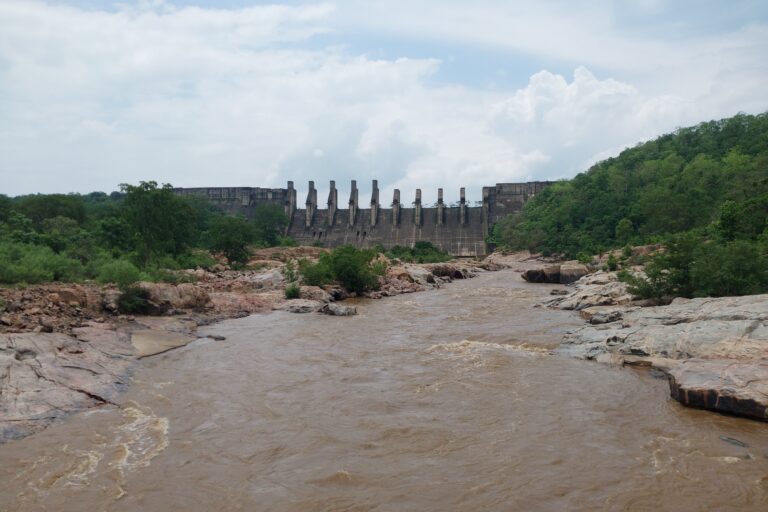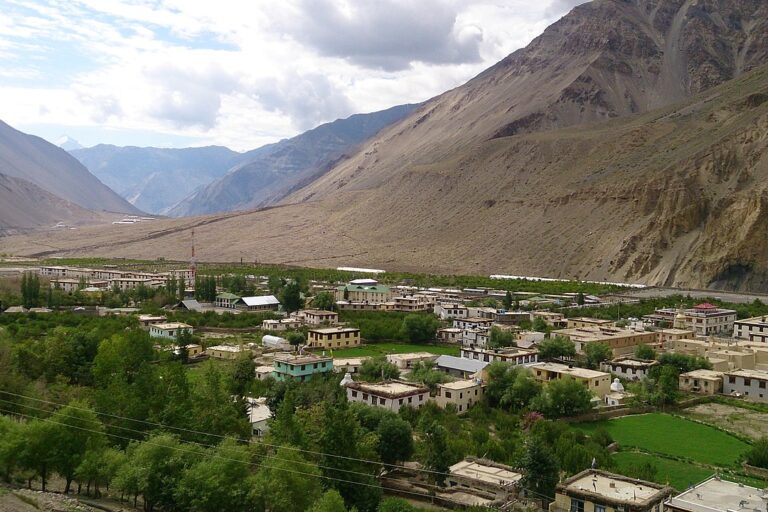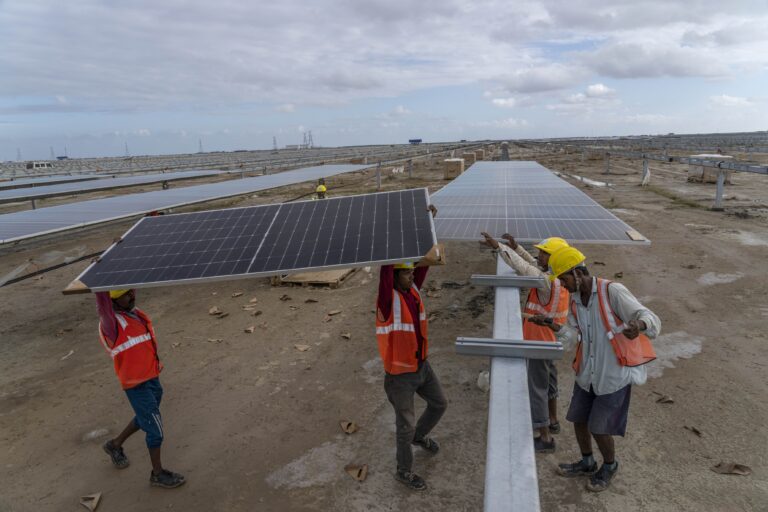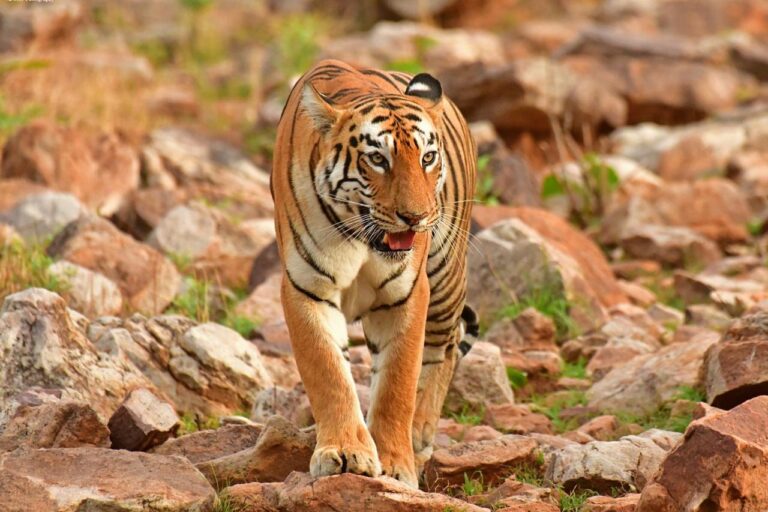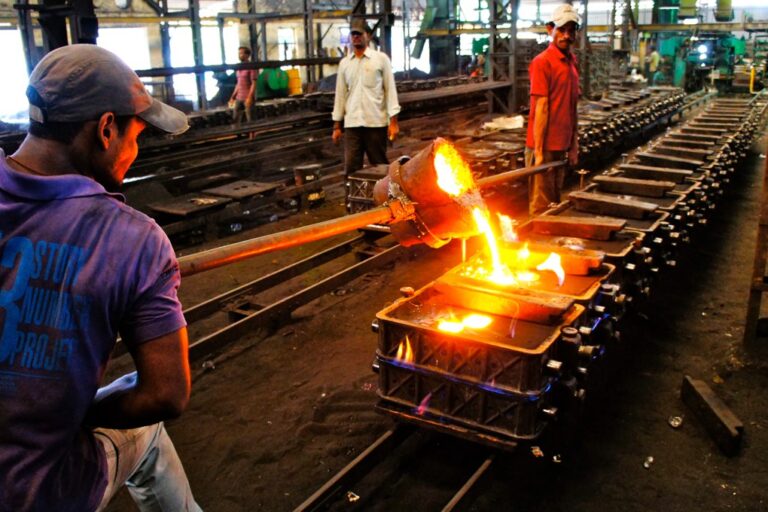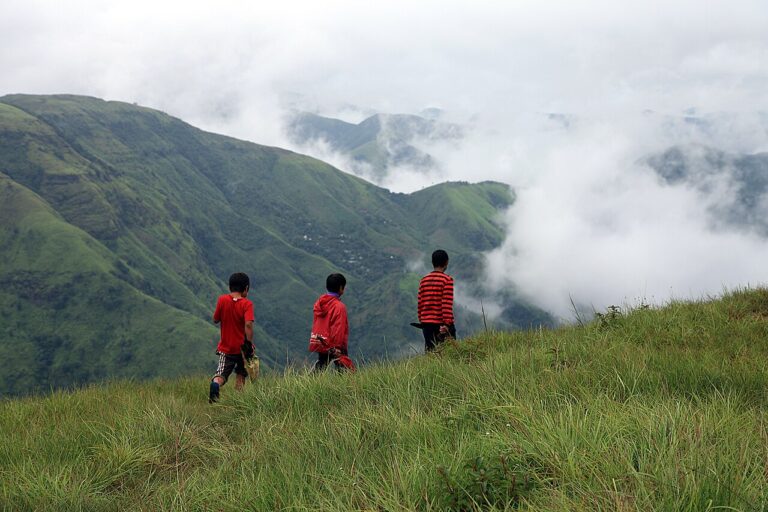- A study finds that mechanically uprooting invasive Prosopis juliflora trees that have taken over the native Banni grassland of Gujarat helped restore native plant diversity.
- But lopping, practised by the local communities for charcoal-making, did not significantly increase plant richness and cover.
- Scientists say landscape-wide removal of Prosopis while ecologically feasible has socio-economic trade-offs because the local communities rely on the invasive woody tree for livelihood.
- They suggest that the landscape can be maintained as a mosaic of native grassland and invasive trees until Prosopis supports livelihoods and the trade-offs in its removal are fully understood.
With over 60 species of grasses, Kutch’s Banni grassland, India’s largest, is home to an array of wildlife and key to its dairy industry. The grasses satiate the livestock reared by pastoralists, who, with other communities have called this water-limited region home, for over four centuries.
“Banni has a milk-based economy. There are saltwater loving grasses and sweetwater-loving grasses in the Banni. Just as we love sweet dishes and the salty farsan (salty snacks), the livestock also love their mix of salty grasses and sweet grasses,” shares Ritesh Pokar, a Kutch native and Ph.D. scholar with Maharaja Sayajirao University Baroda, Gujarat, working in the Banni landscape.
Pokar rattles off names of some of the popular palatable (sweet) grass species such as Dichanthium annulatum (Denai), Eleusine compressa (Gandhiro) and salty herbs such as Cressa cretica and Aeluropus lagopoides among others. “And the pastoralists know which grassy patch to take them to if the animals fall ill,” notes Pokar, working with Sahjeevan, a Bhuj-based NGO that works on ecological and social issues in the Banni. Pokar is convinced that the local communities must be taken into consideration to manage the landscape.
Because Banni’s 2500 square km low-lying saline sprawl isn’t what it used to be earlier. The ownership of the land that was traditionally seen, used and managed as a commons by local communities, is a contentious issue now. The relentless spread of an invasive tree is among the many challenges that have emerged in the landscape.
Prosopis juliflora introduced to Banni in 1961 to check the ingress of the salt pan desert − the Great Rann of Kutch which lies in Banni’s northern fringes − has rapidly taken over 50 percent of the grasslands with ecological and social impacts. The nitrogen-fixing and highly drought- and salt-tolerant species, rapidly out-competes other vegetation once it spreads. Its thorny and bushy habitat can quickly block paths and make whole areas impenetrable, states international non-profit organisation CABI (Centre for Agriculture and Biosciences International) dataset on the plant.
On one hand, Prosopis, locally called gando baval (‘mad tree’) has transformed vast stretches of open grassland into woodlands and reduced fodder for cattle, altering the livelihood of the migratory pastoralist community (the Maldharis), but on the other hand the invasive has also led to the generation of a novel livelihood source, charcoal making, explained plant ecologist Ankila Hiremath, fellow and co-convenor, Center for Biodiversity and Conservation at ATREE, who has extensively worked in the Banni landscape.
“When Prosopis first came to Banni, people were against it because it was taking over the grasslands; over time people have adapted to Prosopis there, and a lot of people came to rely on it for charcoal-based livelihoods; so lopping trees to make charcoal has become a very common management practice in the Banni,” Hiremath told Mongabay-India.

In a recent paper, coinciding with the launch of the United Nations Decade on Ecosystem Restoration, Hiremath and co-authors at ATREE and Sahjeevan, including Ritesh Pokar, compare two Prosopis removal (management) methods practised locally − mechanical removal and lopping − to see how effectively grasslands recover under these two management techniques across four years.
Using tractors/JCB earthmovers, mechanical removal mimics an approach geared specifically for restoring grasslands, whereas lopping Prosopis near the ground is how the local communities use it for charcoal making, shared Ashish Nerlekar, a study co-author currently with Texas A&M University.
The researchers observed that mechanically removing Prosopis significantly increases native grassland plant diversity whereas lopping did not significantly increase plant diversity. Prosopis came back after lopping: by the fourth year, Prosopis had once again reached harvestable size.
“Despite this being an arid landscape, Prosopis grows very fast. Because it is deep-rooted, it can access groundwater, year-round, unlike more shallow-rooted species. It is also able to tolerate the high salinity of the groundwater, unlike the native woody species, e.g., Acacia nilotica,” elaborated Hiremath.
They find, landscape-wide removal of the invasive species, while ecologically feasible for restoration of grasslands, may not make sense in the socio-economic context because of the multi-layered dependence of communities on Banni. Restoration is as much about people as it is about biodiversity, stressed Nerlekar.
Small households, especially those with small or no livestock holdings have “largely come to rely” on the invasive species for their primary source of livelihoods and even those who depend mainly on livestock can bank upon Prosopis. The woody invasive species provides an extra source of income and succour in extreme drought years. It is a fuelwood source and construction material, shares Ritesh Pokar.
Mechanical removal only the first step in grassland restoration
Instead of large-scale Prosopis removal, a mosaic of Prosopis and grasslands could be one management vision, where some woody plant-encroached grasslands are restored, and some left encroached, the authors suggest. “Grassland restoration may not be the only management objective right now; charcoal-making is also another management objective at present since a number of people depend on it for livelihoods. As outsiders, it is not for us to be prescriptive. The management of Banni has to be decided by Banni’s multiple stakeholders,” emphasized Hiremath.
Nerlekar describes mechanical removal as only a first step in grassland restoration. “Other subsequent interventions like periodic Prosopis removal, adding native seed mixes, maintaining the optimum disturbance regime, will need to be studied separately,” he said.
One of the many challenges in carrying out Prosopis removals is to decide on an appropriate scale. “We need more research at different spatial scales to look at what works best for the landscape. We also need to look at what prevents the desired target species (perennial grasses) from regenerating in the removal sites and have targeted in and ex-situ experiments to look at how best can we bring back the desired biological attributes for the restored sites,” he added.

Nehru Prabakaran at Wildlife Institute of India (WII), who was not associated with the Banni study but was part of a research at Point Calimere Wildlife Sanctuary, Tamil Nadu where a similar Prosopis-removal experiment was carried out, notes that consistent steps following mechanical removal are crucial to completely eradicate Prosopis. Because the tree may be gone, but its seed material is here to stay.
“Grazing animals spread the seeds widely as they consume them. The hard-coated seed material has good longevity and can survive more than a year. With Prosopis, the seeds become more viable once it goes through the intestine of a herbivore,” Prabakaran told Mongabay-India.
He estimates an investment of at least five to ten years following the removal of the trees. “The first step (removal) is costliest and in the subsequent management years, one needs to eradicate the seed bank and uproot seedlings that may spring up. But many management regimes do not invest in these subsequent steps. The success could be much better than what we see with current management regimes in India for Prosopis,” Prabakaran noted.
For example, in Gujarat’s Kutch where Sahjeevan began grassland restoration in 2015, it works with community forest management committees (CFMCs) and Banni breeders’ association to restore grasslands and waterscapes. Villages in the Banni develop action plans with the expertise of technical teams, explained Ritesh Pokar. “When the uprooting of the trees is carried out, the community also indulges in a feast and cultural functions. The development of these plans requires a substantial investment of time by the community. The actual implementation of the plan will also require investments of time and energy as communities work to systematically remove Prosopis (trees and seedlings), as well as work to convince members of the community to voluntarily give up lands they have encroached upon,” Pokar said.
In Tamil Nadu, Prosopis juliflora known as seemai karuvelam, was introduced in 1959 to tackle firewood shortage in the drier southern areas of the state; the introduction of Prosopis juliflora, a native of Central America, in India, could be traced back to 1877 in literature, and by the turn of the twentieth century it was widespread throughout India, Pakistan and Sri Lanka.
According to a 2018 study by the Wildlife Institute of India, sustainable management and control of Prosopis “may be a better option than eradication” in southern Tamil Nadu because more than 90 percent of the people use Prosopis as firewood and charcoal sources. Tamil Nadu is a key charcoal producer and Prosopis reportedly is a significant firewood source in the state.
Prabakaran adds that local communities must be involved in the management of Prosopis, especially in areas where their livelihoods are entwined with the tree. “Over the years, as we switched to cleaner fuels (LPG) the use of firewood has declined and this will likely aid the spread of the invasive. So there should be some form of utilisation-based management of the invasive,” he said.
In 2017, the Madras High Court directed the Tamil Nadu government to work out a plan to remove Prosopis across several districts but it hasn’t met with much success. In Gujarat’s Banni, the state government recently announced its intention to restore the grassland by removing Prosopis from 20,000 hectares (200 square km) to increase the production of good quality grass for livestock.
In June 2021, in his keynote address at the UN High-Level Dialogue on Desertification, Land Degradation and Drought, Indian Prime Minister Narendra Modi referenced the Banni to illustrate how “restoration of land can start a virtuous cycle of good soil health, increased land productivity, food security and improved livelihoods.”
CITATION
Nerlekar, A. N., Mehta, N., Pokar, R., Bhagwat, M., Misher, C., Joshi, P., & Hiremath, A. J. Removal or utilisation? Testing alternative approaches to the management of an invasive woody legume in an arid Indian grassland. Restoration Ecology, e13477.
Banner image: Management of Prosopis-invaded Banni grasslands by communities after mechanical removal of Prosopis tree. Photo by Sahjeevan.






